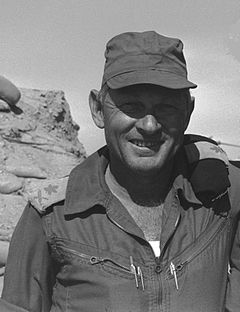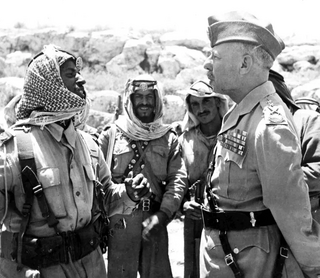
The 1948 Arab–Israeli War, also known as the First Arab–Israeli War, followed the civil war in Mandatory Palestine as the second and final stage of the 1948 Palestine war. The civil war became a war of separate states with the Israeli Declaration of Independence on 14 May 1948, the end of the British Mandate for Palestine at midnight, and the entry of a military coalition of Arab states into the territory of Mandatory Palestine the following morning. The war formally ended with the 1949 Armistice Agreements which established the Green Line.
Haganah was the main Zionist paramilitary organization that operated for the Yishuv in the British Mandate for Palestine. It was founded in 1920 to defend the Yishuv's presence in the region, and was formally disbanded in 1948, when it became the core force integrated into the Israel Defense Forces shortly after the Israeli Declaration of Independence.
The history of the Israel Defense Forces (IDF) intertwines in its early stages with history of the Haganah.

Shimon Avidan, born Siegbert Koch, was a Palmach soldier and IDF military leader. He was the commander of the Givati Brigade during the 1948 Arab-Israeli war.

The Palmach was the elite combined strike forces and sayeret unit of the Haganah, the underground army of the Yishuv during the period of the British Mandate for Palestine. The Palmach was established in May 1941. By the outbreak of the 1948 Arab–Israeli War, it consisted of over 2,000 men and women in three fighting brigades and auxiliary aerial, naval and intelligence units. With the creation of Israel's army, the three Palmach Brigades were disbanded. This and political reasons compelled many of the senior Palmach officers to resign in 1950.

Israel Tal, also known as Talik, was an Israel Defense Forces (IDF) general known for his knowledge of tank warfare and for leading the development of Israel's Merkava tank.

The Israeli Combat Engineering Corps is part of the Israel Defense Forces with responsibility for mobility assurance, road breaching, defense and fortifications, counter-mobility of enemy forces, construction and destruction under fire, sabotage, explosives, bomb disposal, counter-weapons of mass destruction (NBC) and special engineering missions.

The Ink Flag was a handmade Israeli flag raised in March 1949 during the 1948 Arab–Israeli War to mark the capture of Umm Rashrash. The flag’s display in what later became the city of Eilat was replaced two hours later by an official flag when the Golani Brigade arrived. The raising of the Ink Flag is considered to be the end of the war and the birth of Israel.

Mordechai "Motta" Gur was an Israeli politician and the 10th Chief of Staff of the Israel Defense Forces. During the Six-Day War (1967), he commanded the brigade that penetrated the Old City of Jerusalem and broadcast the famous words, "The Temple Mount is in our hands!". As Chief of Staff, he had responsibility for planning and executing Operation Entebbe (1976) to free Jewish hostages in Uganda. He later entered the Knesset and held various ministerial portfolios. Gur wrote three popular children's books and three books about military history.

David "Dado" Elazar was an Israeli senior military officer who was the ninth Chief of Staff of the Israel Defense Forces (IDF), serving in that capacity from 1972 to 1974. He was forced to resign in the aftermath of the Yom Kippur War.

Meir "Zarro" Zorea MC was a general in the Israel Defense Forces (IDF) and later a member of the Knesset. He earned distinction through his combat actions in World War II and in the 1948 Arab-Israeli War. He was a founder of Democratic Movement for Change, an initially successful but short-lived centrist party.

Abraham Yoffe was an Israel general during the Six-Day War. He later entered politics and served as a member of the Knesset for Likud between 1974 and 1977.

The Israeli Armored Corps is a corps of the Israel Defense Forces that, since 1998, has been subordinate to GOC Army Headquarters. The Armored Corps is the principal maneuvering corps, and primarily bases its strength on main battle tanks.
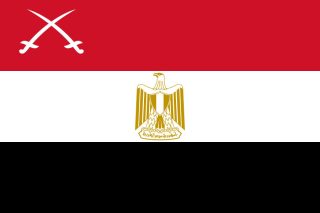
The 2nd Mechanized Infantry Division of the Infantry Corps of the Egyptian Army is a heavy infantry formation created after the Second World War.
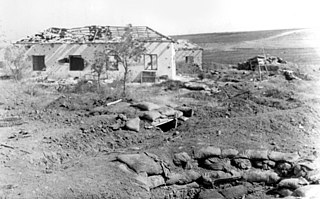
The Battle of Nitzanim was fought between the Israel Defense Forces and the Egyptian Army in the 1948 Arab–Israeli War, on June 7, 1948. It was the first major Egyptian victory of the war, and one of the few cases of Israeli surrender.
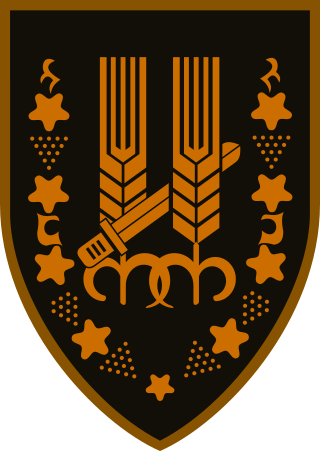
The 10th "Harel" Brigade is a reserve infantry brigade of the Israel Defense Forces, today part of the Southern Command. It played a critical role in the 1948 Palestine war. It is one of the former divisions of the Palmach, the elite fighting force of the Haganah, that remains in the IDF.

This article deals with the history and development of tanks of the Israeli Army, from their first use after World War II in the establishment of the State of Israel after the end of the British Mandate, and into the Cold War and what today is considered the modern era.
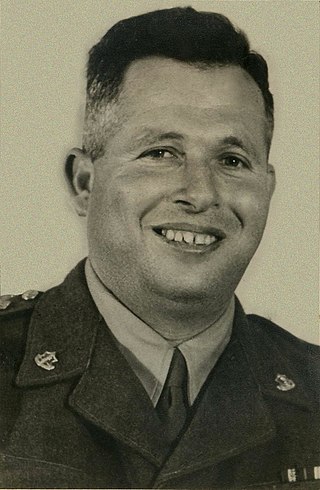
Asaf Simhoni was a major general in the IDF, served as head of Northern Command, Assistant Head of Operations Directorate, and later as the Head of Southern Command. Simhoni headed Israel's main effort during the Suez Crisis. He died on the night the war ended in a plane crash on the way to Haifa.

The 1948 Palestine war was fought in the territory of what had been, at the start of the war, British-ruled Mandatory Palestine. During the war, the British withdrew from Palestine, Zionist forces conquered territory and established the State of Israel, and over 700,000 Palestinians fled or were expelled. It was the first war of the Israeli–Palestinian conflict and the broader Arab–Israeli conflict.

The Israeli Ground Forces are the ground forces of the Israel Defense Forces (IDF). The commander is the General Officer Commanding with the rank of major general, the Mazi, subordinate to the Chief of General Staff.
